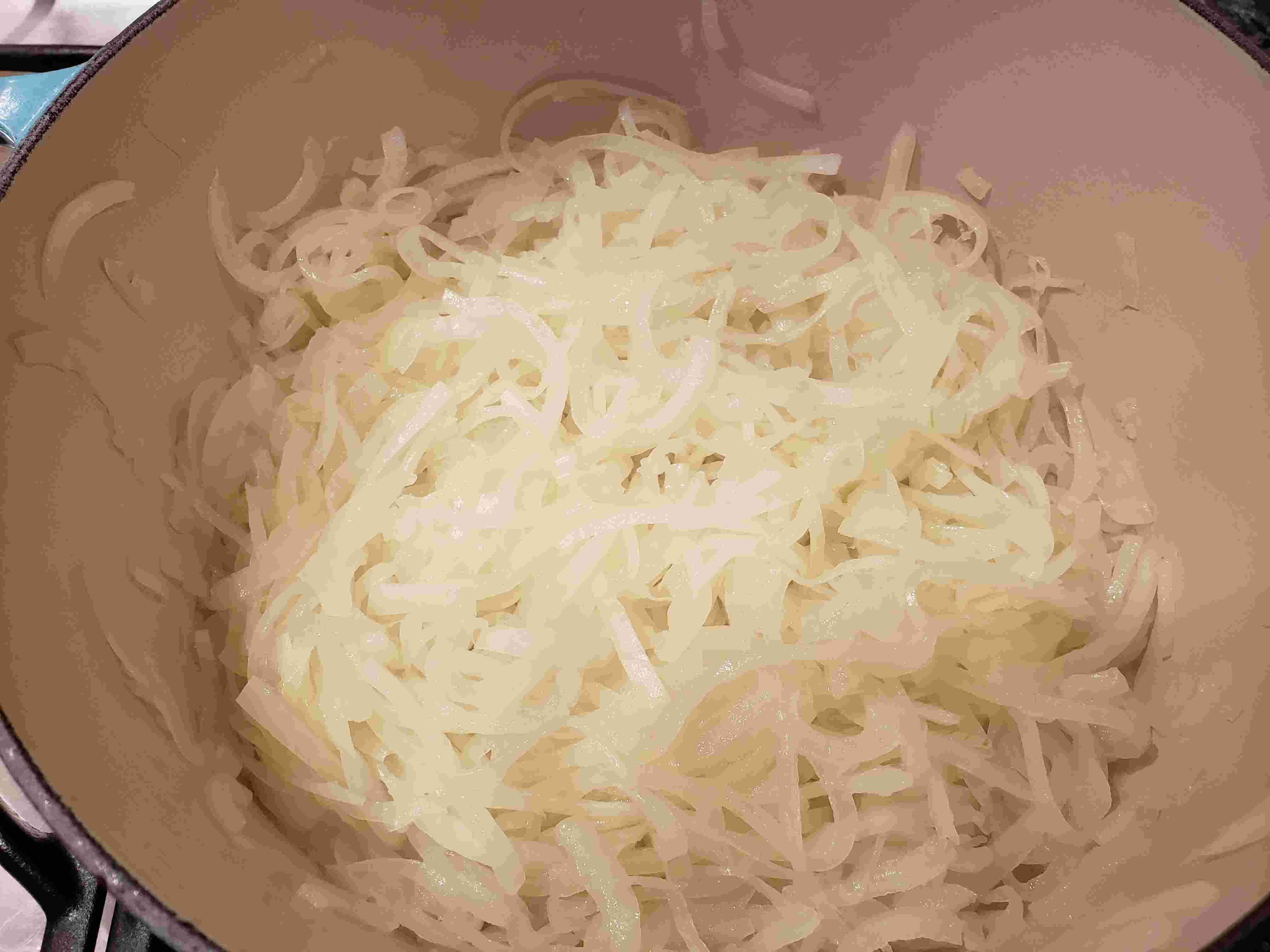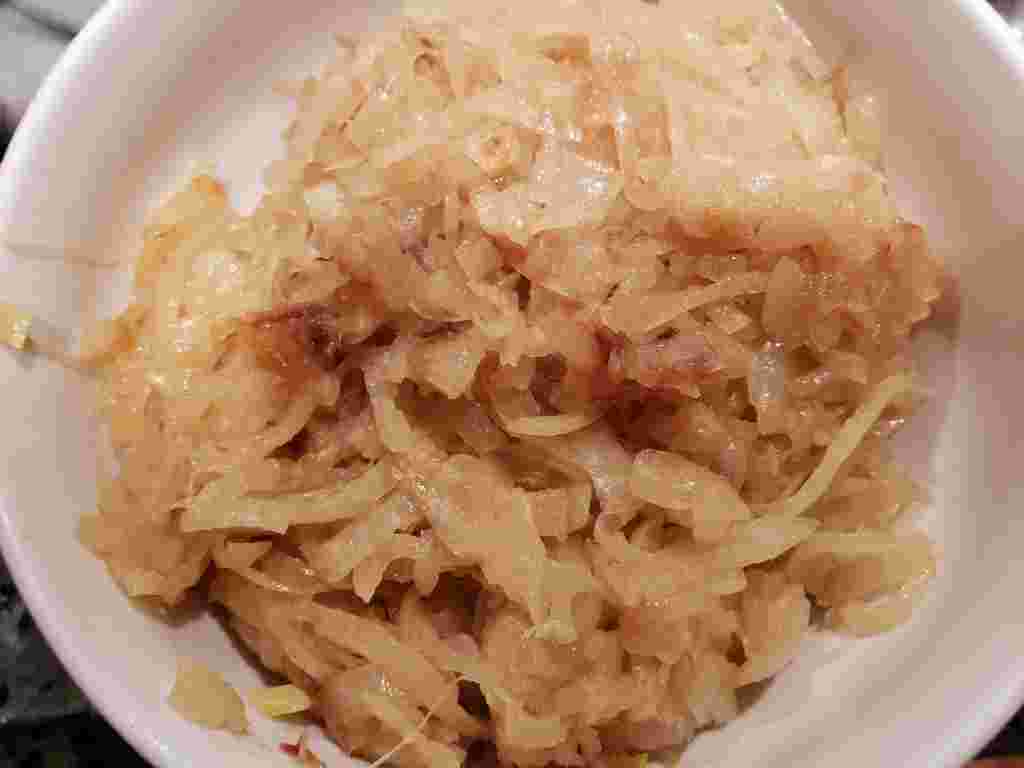Ascetic January, as I like to call it, is officially over! If you’ll recall, James and I (and his family) embarked on a no-booze, no-added-sugar January, to reset our bodies and our minds, and test our spirit and resolve in the name of better health. Here are some reflections, in no particular order:
No added sugar was definitely harder, both practically and emotionally, than no alcohol. Sugar is in everything, and monstrously difficult to avoid. James and I were both fully aware that we were doing this experiment due to a lifestyle choice, and not any essential dietary restriction, and so we were fairly flexible around the margins. We examined labels like hawks, but ultimately and mostly due to laziness, stopped short of traipsing to multiple supermarkets to buy no-added-sugar staples. So we still ate some added sugar in the form of wheat bread and mayonnaise. We also didn’t stop eating out. We really only eat out on the weekends anyway, and we tried our best, but we also ate what we wanted. We had one exceptional cheat meal where we got Japanese. I naively thought it would be okay – it was sushi! Raw fish and rice! Then we got a bunch of barbequed meat that came slathered in teriyaki sauce and eel rolls that came drenched in sweet eel sauce. Whoops. Asian food is basically all just a big added sugar no-no. Given all this, in practice we probably ate closer to an average of <5 grams added sugar per day. That’s sort of depressing, considering that we did try hard to adhere to the rules of the game.
I think that it took me a full 28 days before the sugar cravings stopped. I consistently thought of cake throughout the month – chocolate cake, lemon cake, ice cream cake… The cravings sort of ebbed and flowed, but I would say that it was only on the last Monday of January that I woke up and felt absolutely no desire to eat cake or drink a cocktail. It was only on that Monday that I felt that I could continue this no-added-sugar January for awhile longer. And I did! I didn’t eat any dessert for about 6 days in February. Then James and I went out for a celebratory dinner, I had cake, and BOOM – it was all over. I was back to salivating over cake, and it was like this past January never happened.
Okay – that last statement is a bit facetious. 20 days into February, I haven’t eaten any of those crappy supermarket cakes or chocolate candy bars that I love(d) so much. But I’m very aware that I’m just teetering on a sugary precipice, with only a few Reese’s peanut butter cups standing between current restraint and the sugary bonanza of my past life.
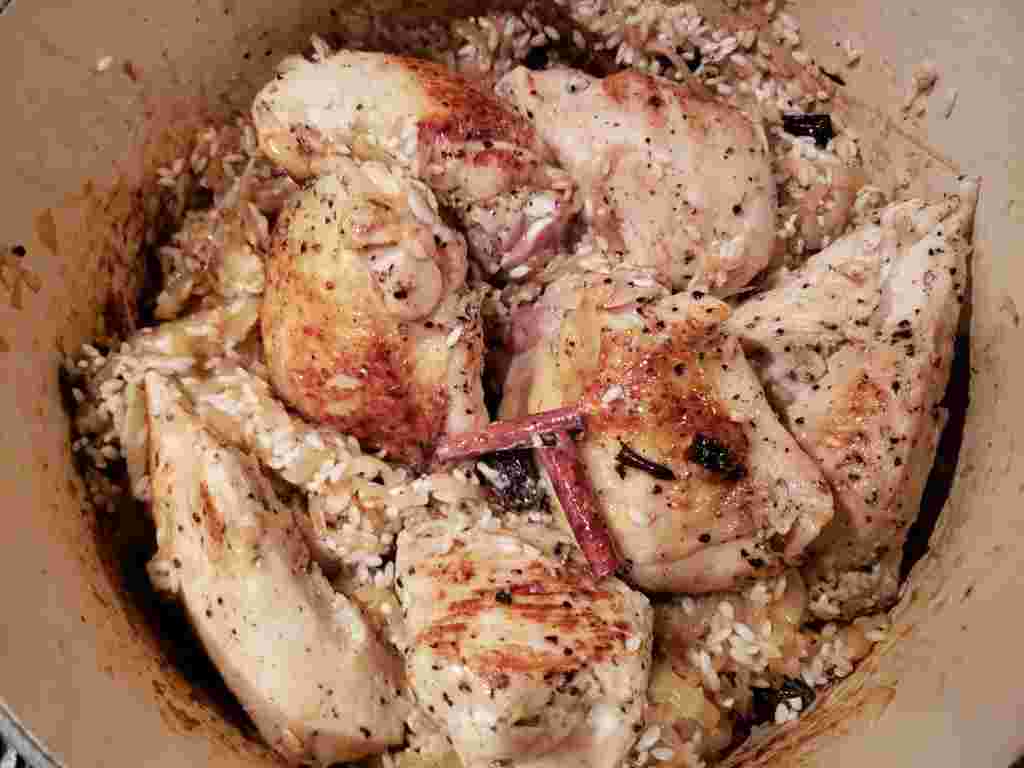
On a positive note, I am hoping some changes will stick quite easily. Plain yogurt tastes more palatable to me now than it did at the beginning of the month, especially with fruit. There are no-added sugar, or low-added sugar, versions of a lot of things, if you look hard enough. I found no-added-sugar museli (branded as Swiss museli – perhaps the Swiss don’t each much sugar?) with raisins that tastes a bit like horse food, but which is growing on me. I know which brands of breadcrumbs have more or less added sugar. I know which kinds of chicken broth have sugar and which do not.
In particular, the infamously sugary flavored yogurt world (some versions have 10 grams of added sugar per one serving!) has begun to catch onto the demand for low-added-sugar yogurts. James loves his coconut yogurts, and the transition from flavored to plain yogurt was especially painful for him. Not one to give up without a fight, however, he tried a lot of no-added-sugar yogurt products with gusto. There were the Siggi’s no-added-sugar yogurts, flavored with only fruit, that were good though sorely lacking on variety, with only two flavors – peach and mango and cinnamon and banana. He bought buckets of raspberries and blueberries to adorn plain yogurt. He tried an unsweetened dairy free yogurt made with soy milk that tasted like cardboard paste. He found a yogurt smoothie drink that boasted no added sugar, but still contained concentrated apple and mango puree (which are still added sugars!), and that, despite the fruit concentrate, still managed to taste like powdery vitamin-y liquid chemicals. In the end, the Siggi’s no-added-sugar yogurts have become a good staple, along with Chobani and Fage less-sugar-added yogurts, which have a bit of added sugar, but also a lot more variety of flavors.
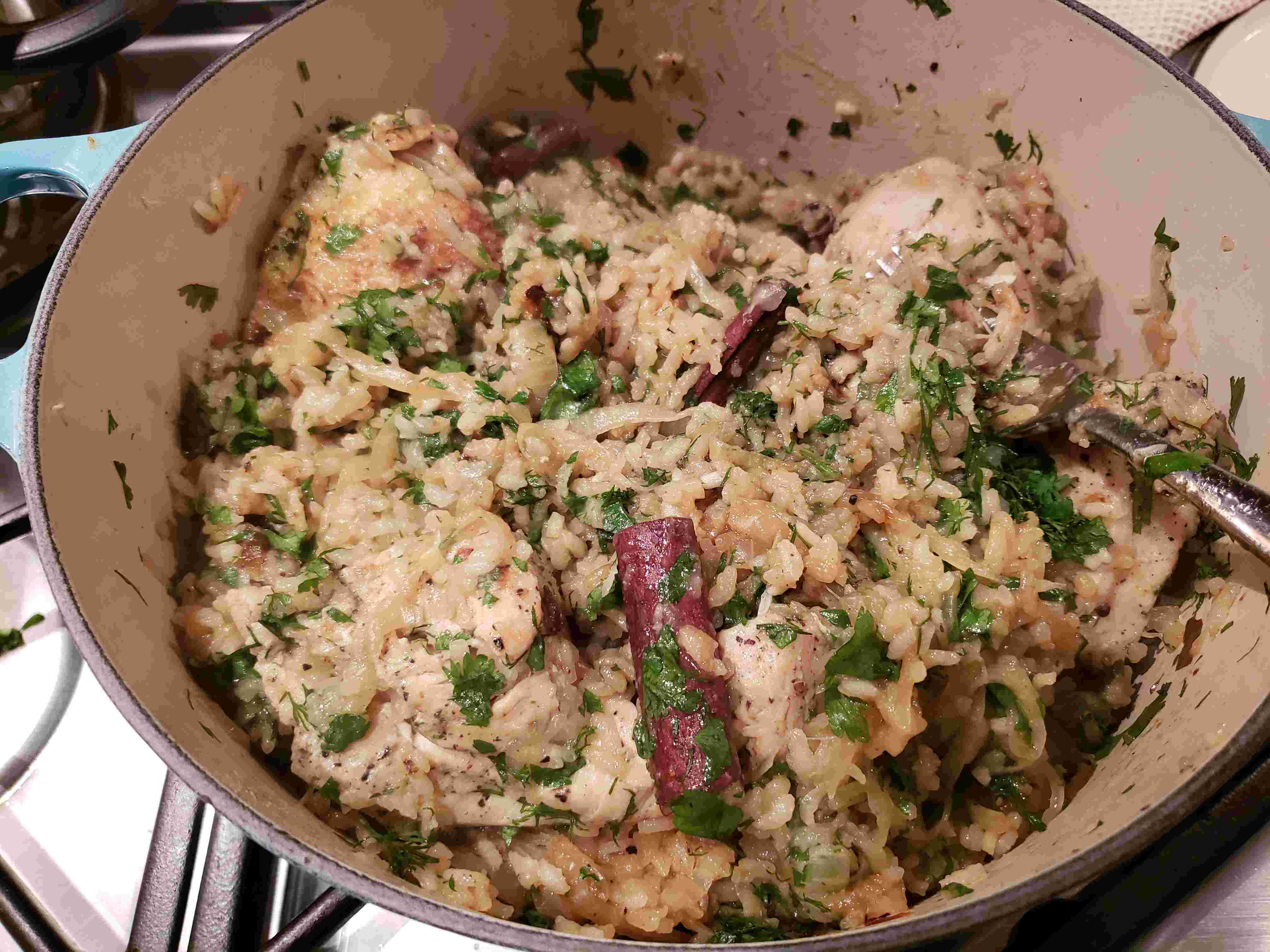
This no-added-sugar diet is expensive! James and I have taken to replacing our calories from sugar with calories from nuts, and while this change is a healthy one, it is also a more expensive one. I don’t think I quite realized before how much of my diet consisted of cheap sugar fillers until now. Before, if I was still hungry after dinner, I’d just eat a couple of cookies, or a candy bar. At most expense, I would eat a fancy Magnum ice cream bar. However, even those fancy ice cream bars, which were frequently on sale, were less expensive than nuts, which were never on sale. Eating healthfully is truly a privilege that is unequally distributed among socioeconomic classes.
In conclusion, ascetic January was a success. There are changes which I hope will permanently stick – plain yogurt instead of flavored yogurt, unsweetened or low-sweetened granola. I am hoping to cut down on candy bars and sugary impulse buys.
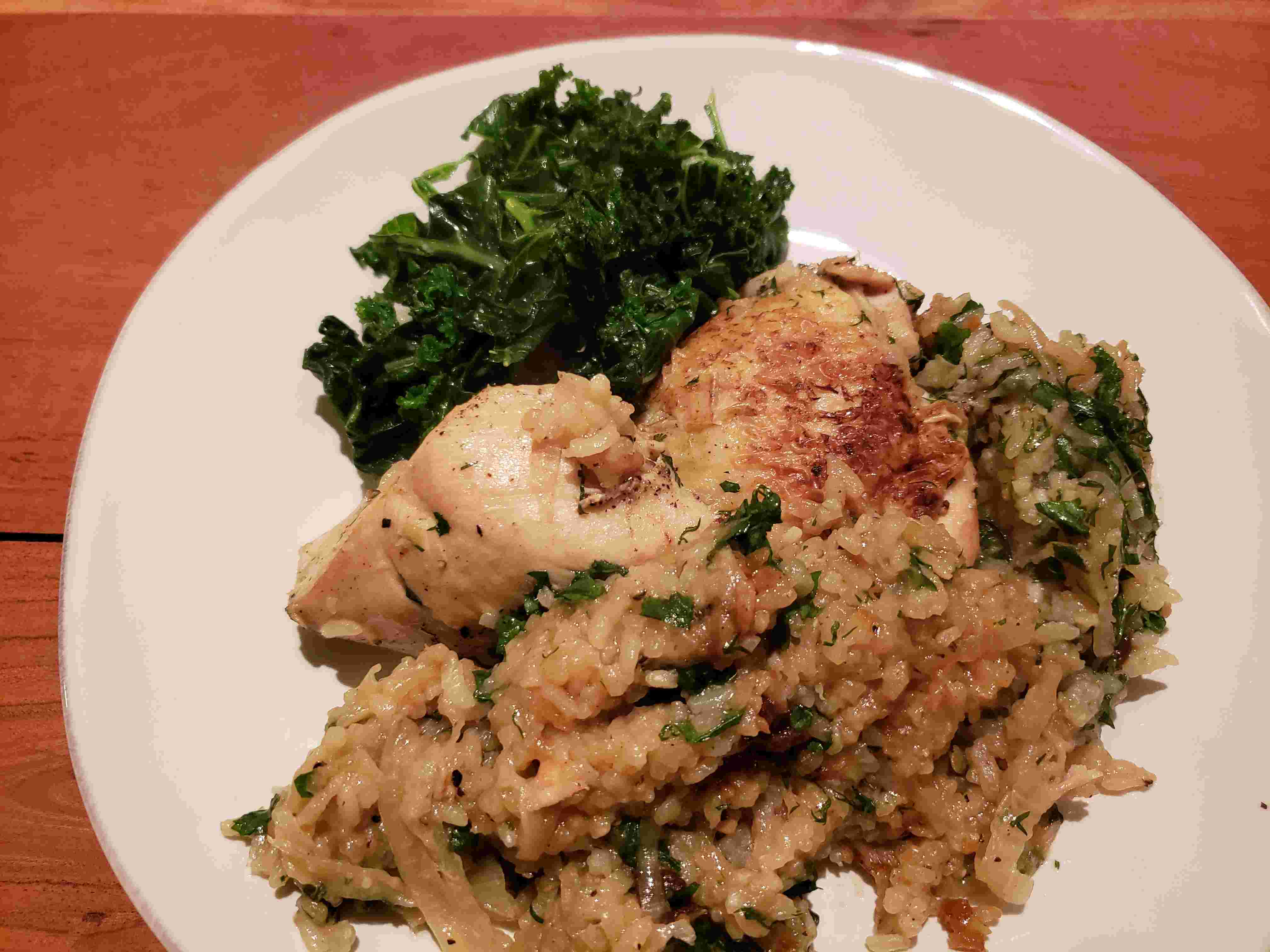
And now, the dish of the month! A deeply flavorful, herby, fresh spin on chicken and rice that includes absolutely no added sugar! This dish is delicious, and an absolute staple in our household. I make it often, and it never disappoints. It does take a bit of time, unfortunately, but much of it is inactive. The time is worth it, and you can easily scale this recipe up for more leftovers (which just get better with time!). A few notes:
- The recipe calls for chicken thighs, which lend additional flavor and fat to the rice. However, when I made it this time, I actually ran out of thighs and mixed in some boneless skinless chicken breast. The breast worked okay, although it was a bit dry. I would definitely stick with thighs next time, or at least use bone-in, skin-on chicken breasts. If you’re stuck up a creek and using skinless breasts, be a little more liberal with the olive oil as you’re searing the chicken.
- I pretty much tripled the amount of herbs added at the end, because I love the freshness and lightness they give the dish. I ended up tossing in whole handfuls of parsley, dill, and especially cilantro, which I love. The quantity increases are reflected in the recipe that I’ve provided, but don’t be afraid to taste and add to your liking. The herbs perfectly complement the heartiness and richness of the rest of the dish.
- The raisins are my own substitution, since I’m lazy and have never sourced barberries or currants. If you use them, please let me know what I’m missing! I like the raisins and the slight sweetness they give the dish. You could omit entirely, but I think the raisins add a nice depth of flavor.
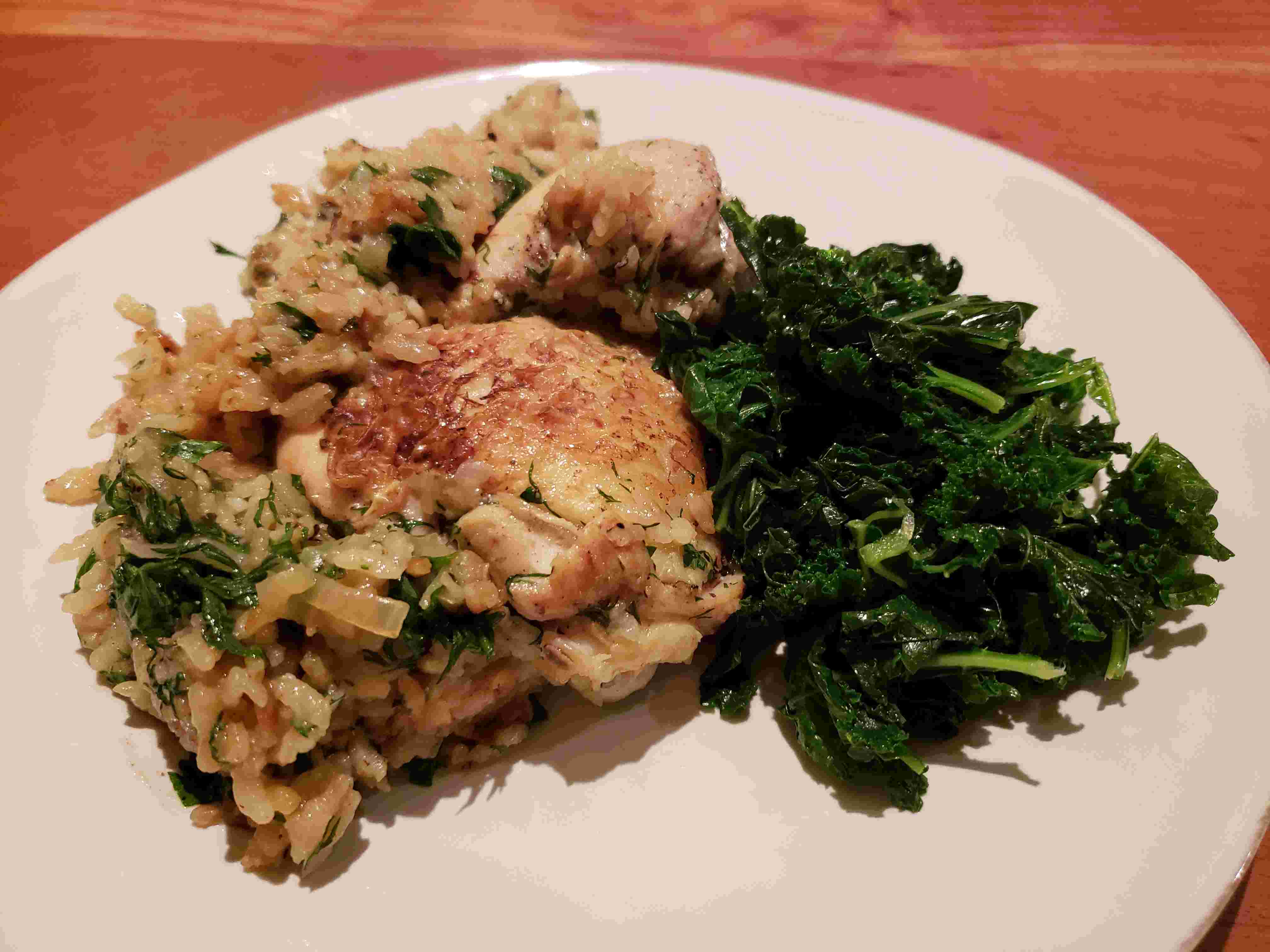
| Servings | Fuss Factor | Total Time | Prep Time | Cook Time |
|---|---|---|---|---|
| 4-5 | 4 | 1 1/2 hours | 20 minutes | 75 minutes |
Chicken with Caramelized Onion and Cardamom Rice
Source: The New York Times, originally from “Jerusalem: A Cookbook,” by Yotam Ottolenghi and Sami Tamimi
Ingredients
- 2 1/2 tablespoons (25 grams) barberries or currants, or about 1/4 cup raisins
- 3 tablespoons (40 grams) sugar, if using barberries
- 4 tablespoons olive oil, divided
- 2 medium onions, thinly sliced (about 2 cups or 250 grams)
- Salt and freshly ground black pepper
- 2 1/4 pounds (1 kilogram) skin-on, bone-in chicken thighs, or 1 whole chicken, quartered
- 10 cardamom pods (I prefer green cardamom here)
- Rounded 1/4 teaspoon whole cloves
- 2 long cinnamon sticks, broken in two
- 1 2/3 cups (300 grams) basmati rice
- 2 1/4 cups (550 milliliters) boiling water
- 1/4 cup (about 15 grams) flat-leaf parsley leaves, chopped
- 1 cup (about 15 grams) dill leaves, chopped
- 1/2 cup (about 15 grams) cilantro leaves, chopped
- 1/3 cup Greek yogurt, mixed with 2 tablespoons olive oil (optional)
Instructions
-
If using barberries: Put the sugar and a scant 3 tablespoons water in a small saucepan and heat until the sugar dissolves. Remove from the heat, add the barberries, and set aside to soak. If using currants or raisins, you do not need to do this step.
-
Heat 2 tablespoons of the olive oil in a large sauté pan or Dutch oven for which you have a lid over medium heat. Add the onion, season with salt, and cook for 15 to 20 minutes, stirring occasionally, until the onion has turned a deep golden brown. It’s ok if some onions stick to the pan, just scrape them up with a flat spatula and keep cooking. When done, transfer the onion to a bowl and wipe the pan clean.
-
While the onions are cooking, place the chicken in a large bowl and season with 1½ teaspoons each salt and black pepper. Add the remaining olive oil, cardamom, cloves and cinnamon and mix everything together. After the onions are done, heat the pan again and place the chicken and spices in it. Sear chicken for 4-5 minutes over medium heat on each side, until browned, and remove from the pan (this will part-cook the chicken). The spices can stay in the pan, but don’t worry if they stick to the chicken. Remove most of the remaining oil, leaving just a thin film at the bottom. Add rice, caramelized onion, 1 teaspoon salt and plenty of black pepper. Drain the barberries and add them (or the currants or raisins). Mix everything together well and place the seared chicken back into the pan, pushing it into the rice.
-
Pour the boiling water over the rice and chicken and bring to a boil. Once boiling, cover the pan, and cook over very low heat for 30 minutes. Take the pan off the heat, remove the lid, quickly place a clean tea towel over the pan, and cover again with the lid. Leave the dish undisturbed for another 10 minutes (this will finish steaming and cooking the rice). Finally, add the herbs and use a fork to stir them in and fluff up the rice. Taste and add more salt and pepper if needed. Serve hot or warm with yogurt mixture if you like.

